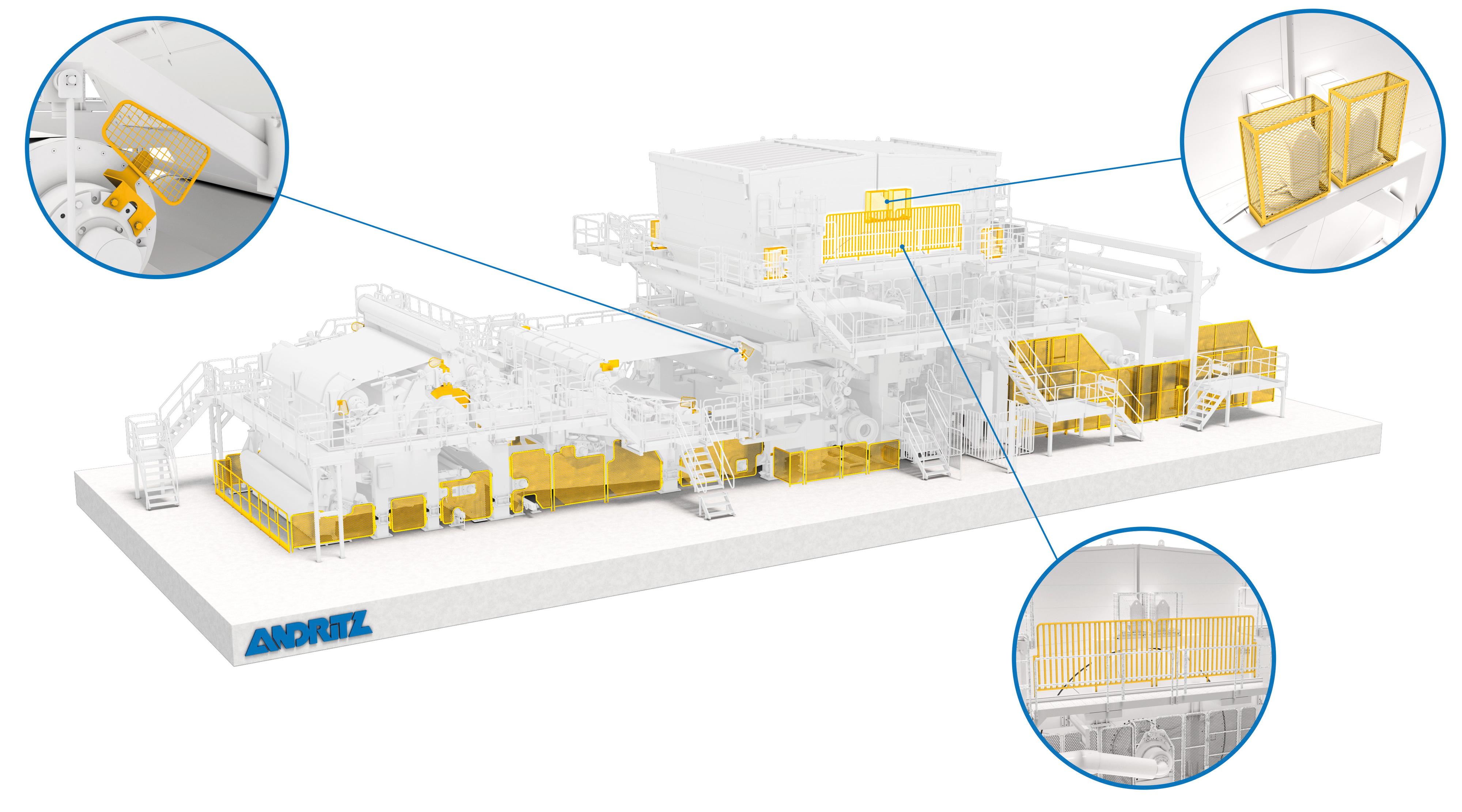In addition to CE markings on new supplied machines, ANDRITZ provides audits on older machines to ensure, that these machines comply with the current regulations. Furthermore, safety advice will be issued if it comes to major rebuild projects.
Other countries and regions also have their own conformity markings including the USA and Canada (e.g. UL for electrical components), China (e.g. CCC) and Russia and Eurasia (e.g. EAC). “Of course all additional requirements in any given country or region will be respected and taken into account when delivering ANDRITZ tissue machines,” adds Nager.
Under the European Machine Directive, which is the legal basis for machine safety in Europe, every machine that is placed on the market must have a risk assessment which is the core tool to ensure that safety has been seriously taken into account. This means identifying where any hazard areas may occur and taking defined steps to make those areas safe.
“This is not simply a case of ticking boxes,” says Nager. “This really is about reducing risks in the work environment, often in tight spaces. For example, it is quite common in the tissue industry for space to be a problem, and squeezing a machine into a tight area. If this happens, it is particularly challenging that people are kept at a safe distance away from the hazardous areas.”
“We are working closely with our customers to improve the safety of their tissue production process, for example: Which safety elements need to be eliminated or by-passed; which kind of smart solutions can we offer or develop conjointly to create a safe environment?”
THE ABC OF SAFETY ON ANDRITZ TISSUE MACHINES
The risk assessment ensures that nothing is left out or forgotten when it comes to all aspects of safety on tissue machines. ANDRITZ realizes this with its high competence in various fields, fully understanding the mechanical demands and with all process know-how in house. This involves making a list of all important factors relating to risk on a tissue machine and defining measures how to mitigate these risks.
“These standards are split into A-, B-, and C-standards” explains Nager. “A-standards are general safety related standards, such as ISO 12100 which defines what a risk assessment must contain; B-standards are more precise, related to different types of risk and C-standards which break the safety topic down to individual components such as tissue making equipment.”
“This is complex and difficult to do, however this long list ensures that every area is covered, and no part of the machine or process is left out or forgotten.”
But essentially making tissue machines safe is not all about lists and standards. Ultimately, the aim is to identify any risk area and make it as safe as possible while at the same time allowing full and maximum efficiency of production to take place. This is where ANDRITZ expertise comes into its own.






